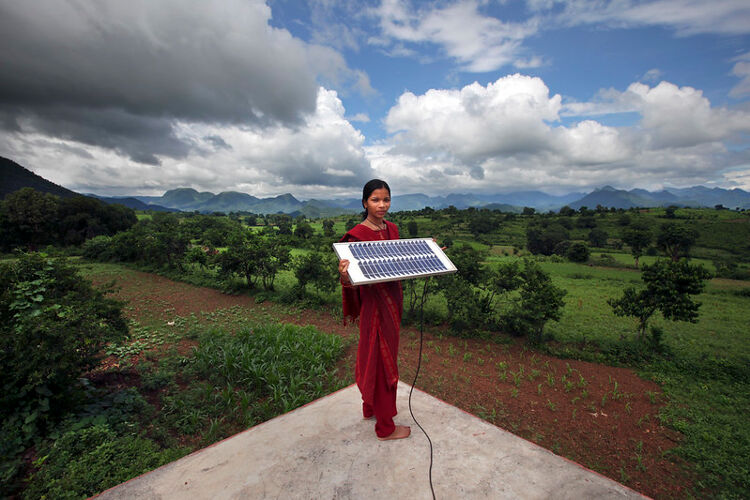Climate change and COP 26

This is a big year for tackling climate change, and COP26, or the 26th Conference of the Parties, is a major international event planned to drive action forward. It’s a summit under the United Nations Framework Convention on Climate Change (UNFCC) taking place in Glasgow in November, having been moved from 2020 as a result of the Covid-19 pandemic. This year the UK is president.
The UNFCCC is an international treaty aiming to “prevent dangerous human interference with the climate system”. It was set up following the Earth Summit in Rio de Janeiro in 1992, is the parent treaty of both the Kyoto Protocol and the Paris Agreement, and the countries who have ratified it meet annually at the COP.
The main purpose of this year’s meeting is to finalise implementation guidelines for the Paris Agreement, which is aimed at limiting global warming to as close as possible to 1.5°C above pre-industrial levels. The agreement is legally binding, and 197 countries have signed up to it, committing to reducing greenhouse gases, building resilience to the impacts of climate change and, for many, to providing technical, financial and capacity building support for those countries who need it. Each country sets their own targets (Nationally Determined Contributions) and these are to be updated every five years, working towards the overall goal.
From 2024, countries will need to report transparently on actions they’ve taken and progress made (and there is what it called an ‘enhanced transparency framework’, or ETF to manage this); reports will be used to track overall progress and recommendations for more ambitious targets as needed.
There are two reasons this year is especially important, the first being that if greenhouse gas emissions are not reduced enough by 2030, those already in the atmosphere will mean dangerous climate change is inevitable: a level of warming that will cause irreversible damage to the environment. This meeting therefore needs to trigger meaningful action.
This year is also particularly significant because of the USA rejoining the agreement and the strong signals being sent by their new president.
Action to expect
How the various commitments will affect businesses is likely to vary from country to country. Although various targets have been set, they are meaningless without plans on how to achieve them. The drive now will be for clear plans where they don't exist. These will also help businesses know what is to be expected of them.
As an example, in the UK there is a very ambitious target and a strategy, but definitive plans haven’t been published on how it will be achieved. Some business sectors do know implications for them, however: industry is to be ‘decarbonised’ by reducing fossil fuel consumption and by cutting avoidable waste of materials; this will involve improving energy and resource efficiency, increasing use of electricity (and increasingly decarbonising the electricity grid) instead of fossil fuels, and greater use of hydrogen and carbon capture and storage. Power generation businesses, vehicle manufacturers and related industries, boiler manufacturers and blast furnace companies, amongst others, will need to make a lot of changes.
Within the EU, there is also a strong focus on decarbonising energy supplies and energy efficiency, with targets for greenhouse gas emissions reduction, share of renewable energy and improvements in energy efficiency.
Within the overall framework, there are also long-term strategies – the two key dates are 2030 for the short-term efforts and 2050 for achieving the long-term goals.
For our industry, think about either carrots or sticks to encourage energy and resource efficiency, increasing availability of suitable electric or hydrogen delivery vehicles and infrastructure to support them, tighter controls on other vehicles – increased taxes, low emission zones, clean air zones etc. -and tighter controls on boilers, with maybe a future requirement to upgrade or replace: hydrogen boilers are a possibility, with some now available, and much is being done with ground, water and air-source heat pumps for heating. Be prepared also for tighter controls of refrigerant gases used in air conditioning systems: many of these have a very high global warming potential.
What the customer base is doing may well have the greater direct effect on our industry sector. Many larger organisations are already pushing hard for net zero in their own businesses and value chains, some using science-based targets based on the Paris agreement. Supply chain emissions are a very significant part of their totals – and suppliers who support their aims are those they want.
Cities are also taking action: the C40 cities – 97 of the world’s megacities representing a quarter of the global economy - have mayors committed to delivering on the most ambitious goals of the Paris Agreement at the local level, as well as to clean air. Many smaller cities have also followed suit. Again, there are supply chain implications – I’m seeing more of my own customers who work for local authorities receiving supply-chain questionnaires on what they are doing to reduce greenhouse gas emissions.
Shareholders and financial institutions are pushing for change: businesses unprepared for change and unable to cope with climate impacts make a poor investment. There is also a divestment movement: moving investments away from fossil fuels to avoid a big hit as they lose value, this may affect your pension and savings investments.
Universities and schools are another group declaring climate emergencies and taking climate action, and again another customer base for many. In the UK, many NHS trusts have done the same, as have health institutions elsewhere.
To learn more about what’s going on in your country, this map provides a useful guide: https://climateaction.unfccc.int It not only gives a country overview, but lists commitments by local councils, cities and businesses.
Public activism
Leading up to COP 26, expect particularly to see young people pushing hard for action. They are the ones with most to lose. A Youth Mock COP went ahead last year, simply moving online after Covid struck; demands for change were agreed and they are being heard. After a lawsuit, 33 European governments were ordered to respond to a complaint filed by six youth campaigners that governments are moving too slowly to reduce greenhouse gas emissions. Joe Biden has surprised many people by appointing Jerome Foster, an 18-year-old youth striker who had spent 2020 protesting outside the White House every week, as one of his climate advisers.
Young people are the future, and your future customers and staff, and their voices are growing louder on the topic of climate change. We need to listen; they are the ones who will live with the consequences of our actions or inaction.
Topics
Interested in joining our community?
Enquire today about joining your local FESPA Association or FESPA Direct
Recent news

Sustainable substrates for vehicle wrapping
As demand for environmentally friendly applications continues to increase, Rob Fletcher takes a closer look at some of the more sustainable materials available to companies working in the vehicle wrapping sector.

Available substrates for outdoor sign and displays
Nessan Cleary details the available substrates for outdoor sign and displays.

